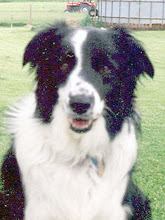After more than a decade of sheep ownership, I've concluded there are no good days to trim hooves, only not-as-bad days.
A 30-degree day with a light dusting of snow and frozen ground is as good as it gets--which is how I found myself spending my Saturday trimming sheep hooves.
"Sheep have cloven feet, so we're trimming eight hooves per sheep, for a total of 152 hooves," I tell my husband.
He's picking out his outfit. As chief sheep wrestler and holder, he needs clothes that allow movement, but also provide protection from sharp hooves.
I swap out my winter gloves for leather work gloves, put on my winter barn wear and a headlamp. I'm the chief trimmer.
Sheep hooves grow like fingernails. In rocky areas, sheep wear down their feet and seldom, if ever, need trimming. We have a lot of clay in our soil, and in years when the summer, fall and winter are wet, the sheep have little opportunity to wear down their feet, and we must trim twice a year.
The job's been on the to-do list for weeks, but it's not something to tackle when sheep have mud-covered feet. When the ground is frozen and the sheep spend time on the snow, then their feet are clean and soft.
And yet the job is tedious. Sheep are low to the ground, so I find myself in a squat as I try to hold the ewe's foot between my legs.
After two hours and trimming a dozen sheep, we take a break.
"There's got to be a better way," I say as I try to straighten.
During the break, the husband searches YouTube for sheep trimming, and we watch a man lead a goat into the chute of a tilt table that is sitting in an open area. We look at each other. None of our sheep willingly walk into a chute. We watch more videos of smiling sales people operating tilt tables and other restraining devices, and sheep that are squirming and kicking.
Shaking our heads, we head back to the barn where the last seven sheep await.
The sheep in the last group are the older ewes, the ones who were smart enough to hang back. But they're also more cooperative, and so I have time to think about things, like how most people I know are spending the day indoors instead of leaning into a pregnant ewe; like how renting the farmland for grain production would be easier than raising sheep; like how some jobs still require getting dirty and sweating a bit.
The last ewe that we trim is a 2-year-old white ewe, the daughter of the Spotted Ewe, granddaughter of the Upheaded Ewe and great-granddaughter of our foundation ewe. She is bright-eyed, alert and has lovely confirmation. She's due to deliver her first lambs in March.
Those lambs will remind me why we have sheep--and they'll make me forget that sheep trimming day in January.
Subscribe to:
Post Comments (Atom)













No comments:
Post a Comment